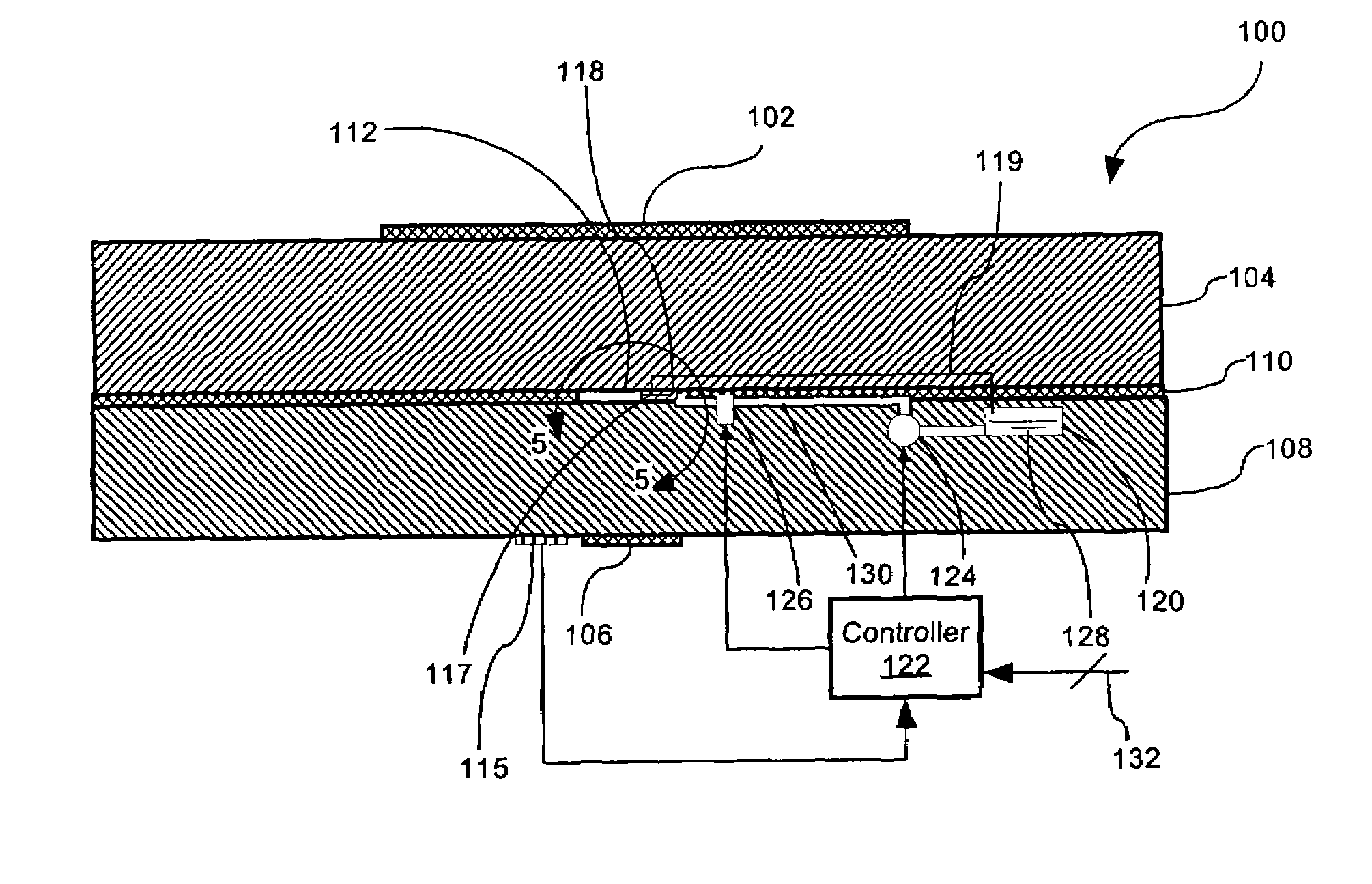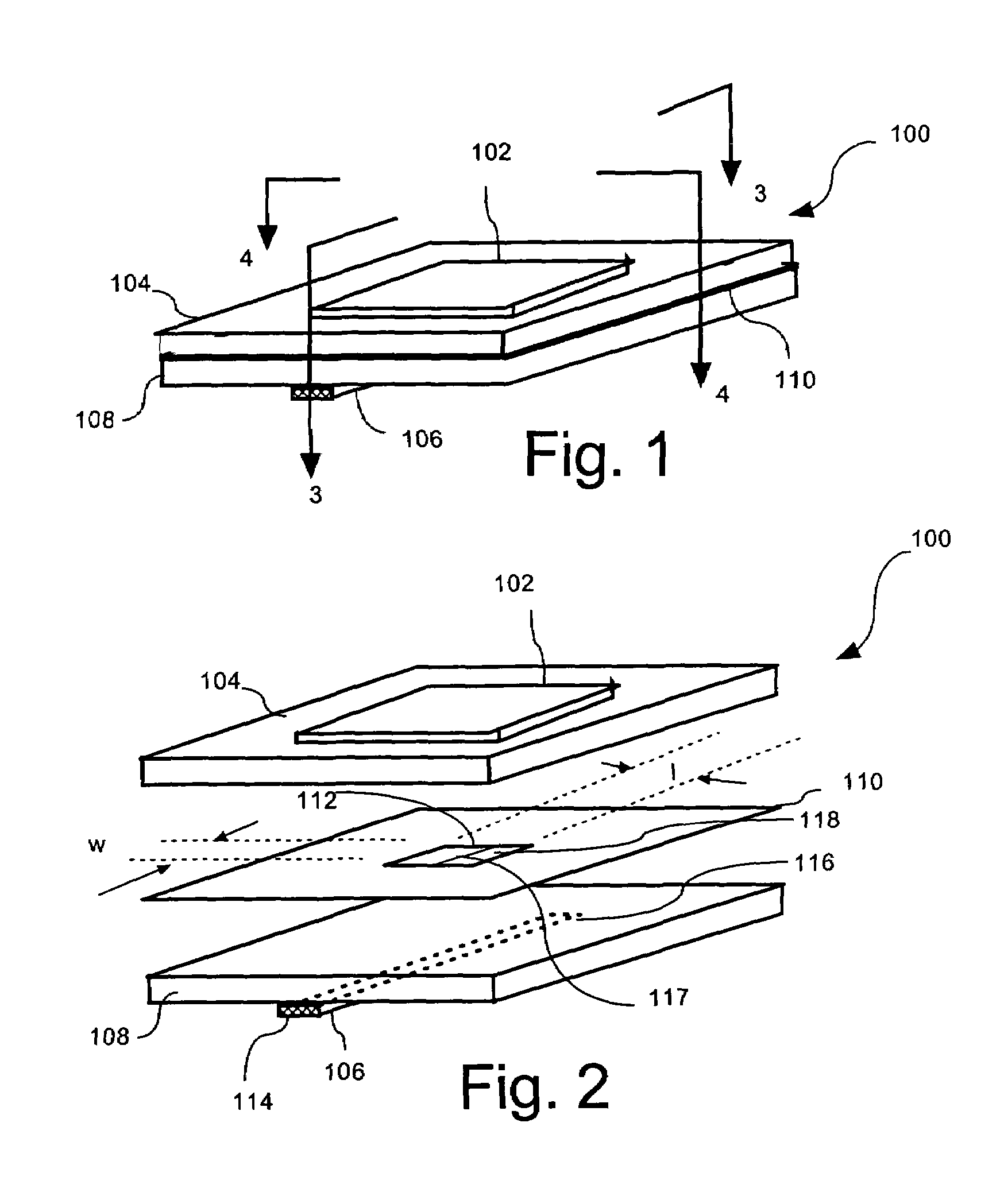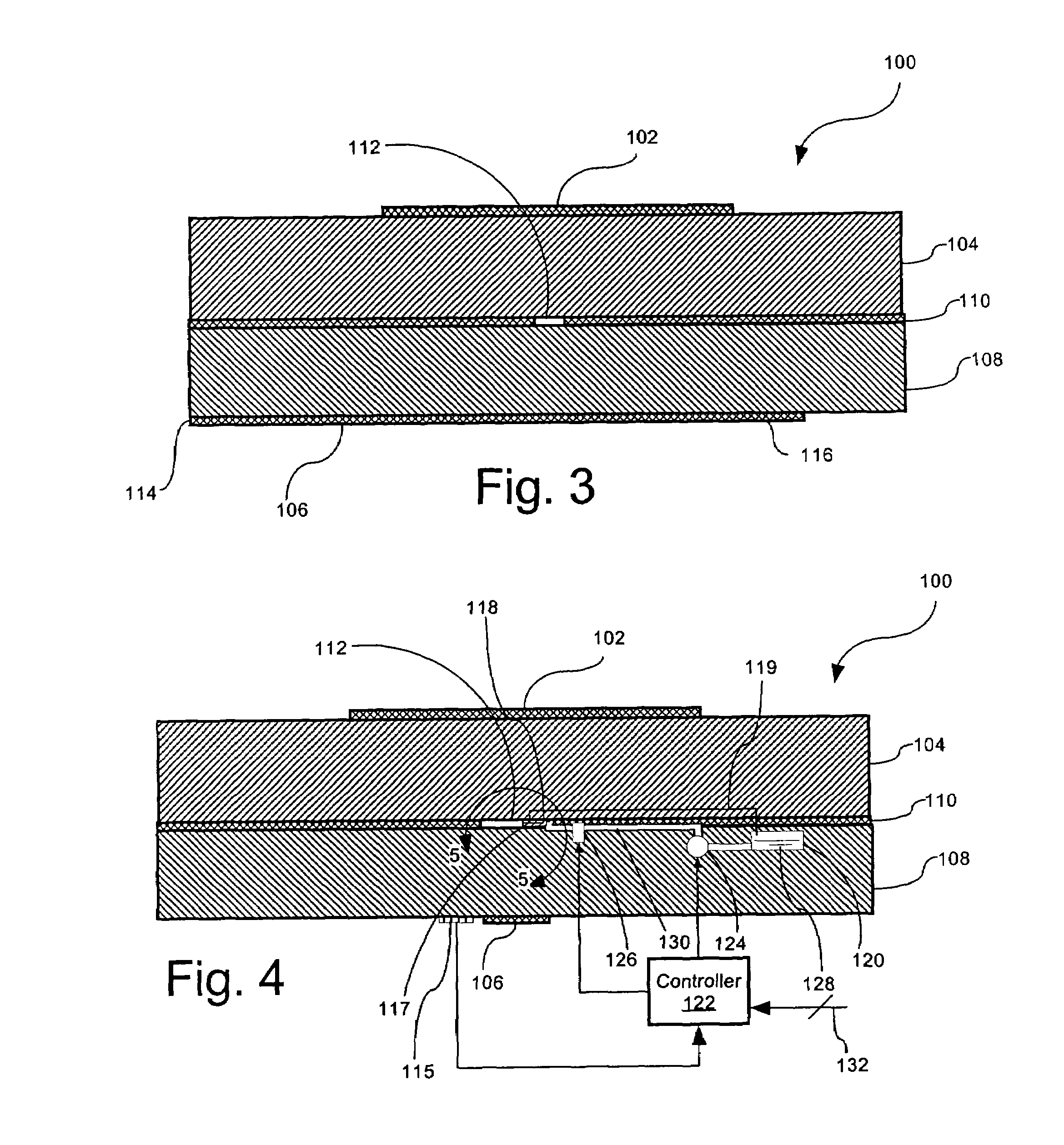Shaped ground plane for dynamically reconfigurable aperture coupled antenna
a dynamically reconfigurable, aperture coupled technology, applied in the field of antennas, can solve the problems of frequency dependence of the impedance bandwidth is usually relatively narrow, and the operation of most conventional matching circuitry is still too narrow for many applications, so as to achieve the effect of increasing the bandwidth
- Summary
- Abstract
- Description
- Claims
- Application Information
AI Technical Summary
Benefits of technology
Problems solved by technology
Method used
Image
Examples
Embodiment Construction
[0021]FIG. 1 is a perspective view of an aperture-fed patch antenna 100 that is useful for understanding the invention. The antenna is comprised of a radiating element 102 disposed on a dielectric antenna substrate 104. The radiating element 102 in FIG. 1 is shown as having a rectangular geometry as is common for patch type antennas, but it should be understood that the invention is not so limited. Instead, the radiating element 102 can have any of a wide variety of geometric designs as would be known to those skilled in the art.
[0022]A feed line 106 can be disposed on a surface of the antenna 100 opposed from the radiating element 102. According to a preferred embodiment, the feed line 106 can be a microstrip transmission line as shown. However, the invention is not limited in this regard and other arrangements are also possible. For example, feed line 106 could also be arranged in a buried microstrip or stripline configuration.
[0023]As illustrated in FIGS. 1 and 2, the feed line 1...
PUM
 Login to View More
Login to View More Abstract
Description
Claims
Application Information
 Login to View More
Login to View More - R&D
- Intellectual Property
- Life Sciences
- Materials
- Tech Scout
- Unparalleled Data Quality
- Higher Quality Content
- 60% Fewer Hallucinations
Browse by: Latest US Patents, China's latest patents, Technical Efficacy Thesaurus, Application Domain, Technology Topic, Popular Technical Reports.
© 2025 PatSnap. All rights reserved.Legal|Privacy policy|Modern Slavery Act Transparency Statement|Sitemap|About US| Contact US: help@patsnap.com



